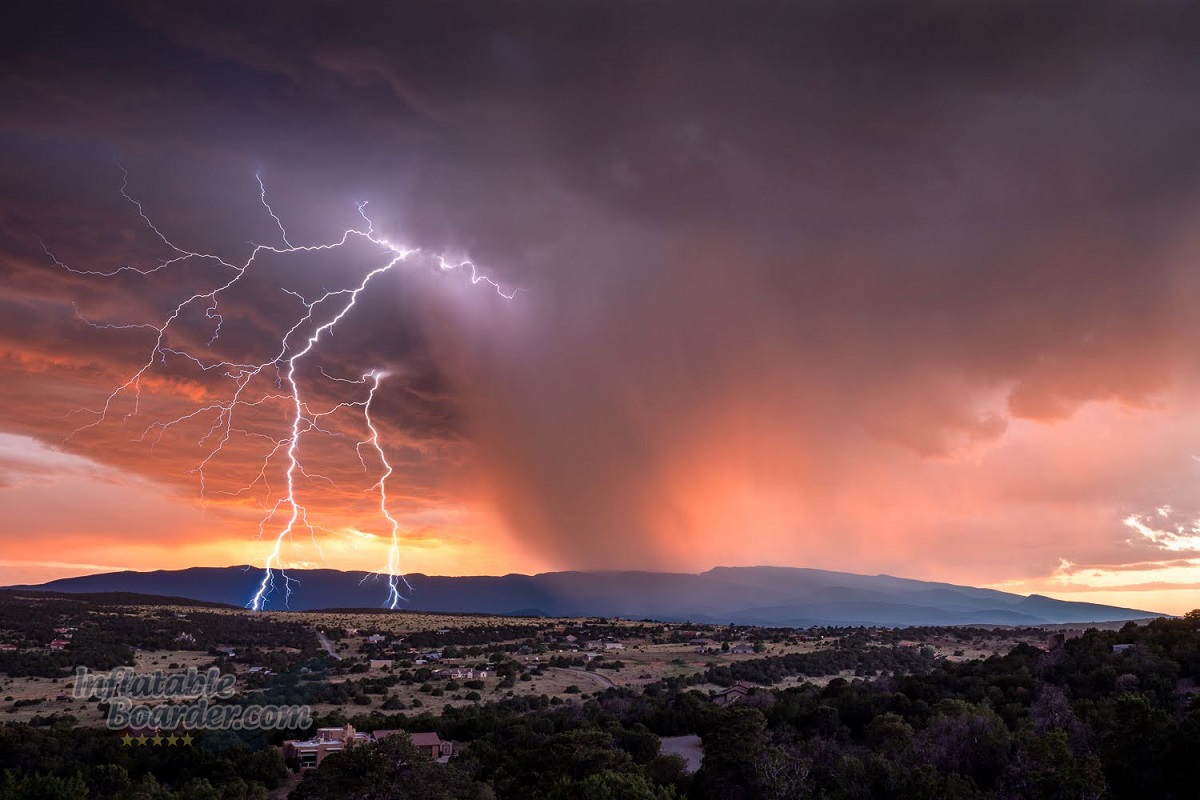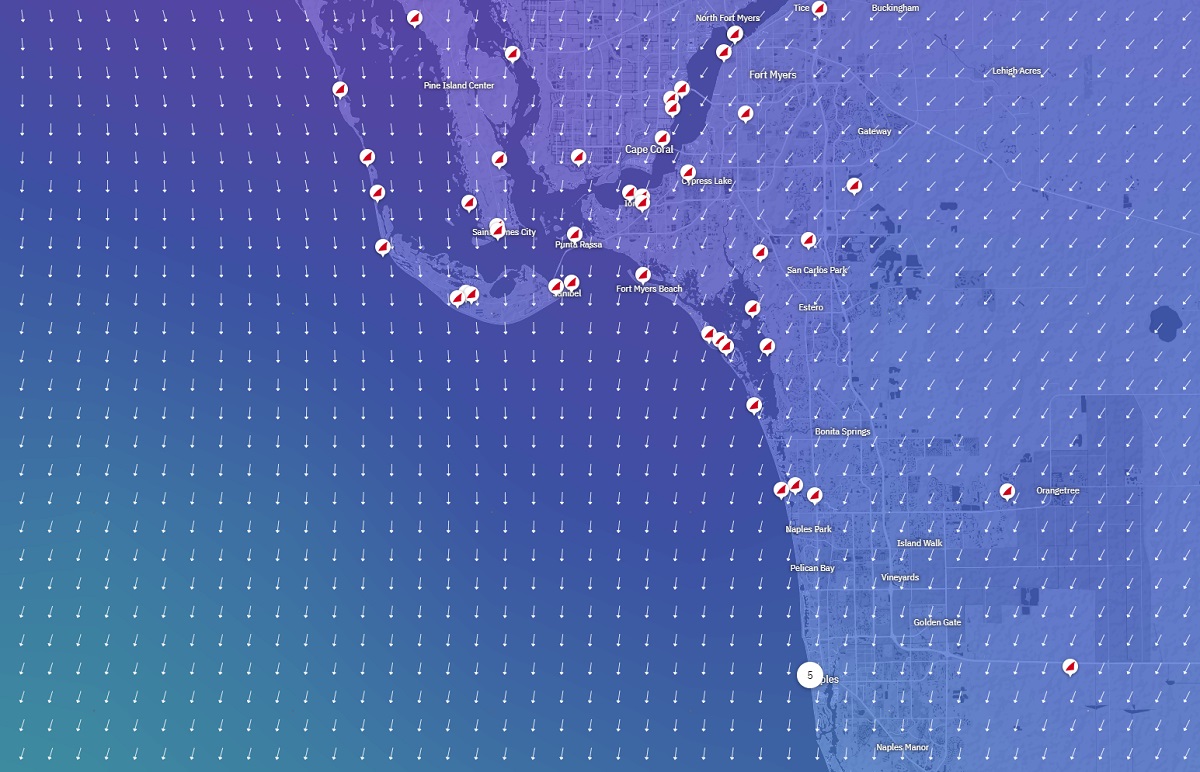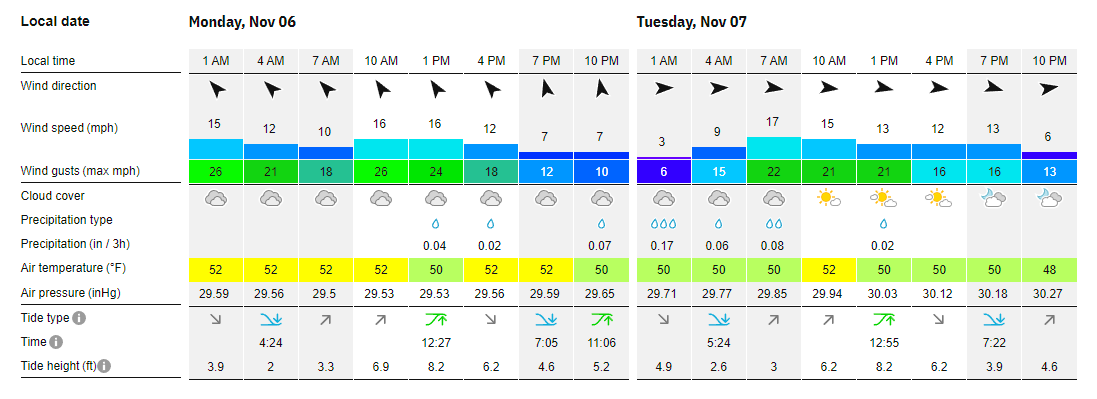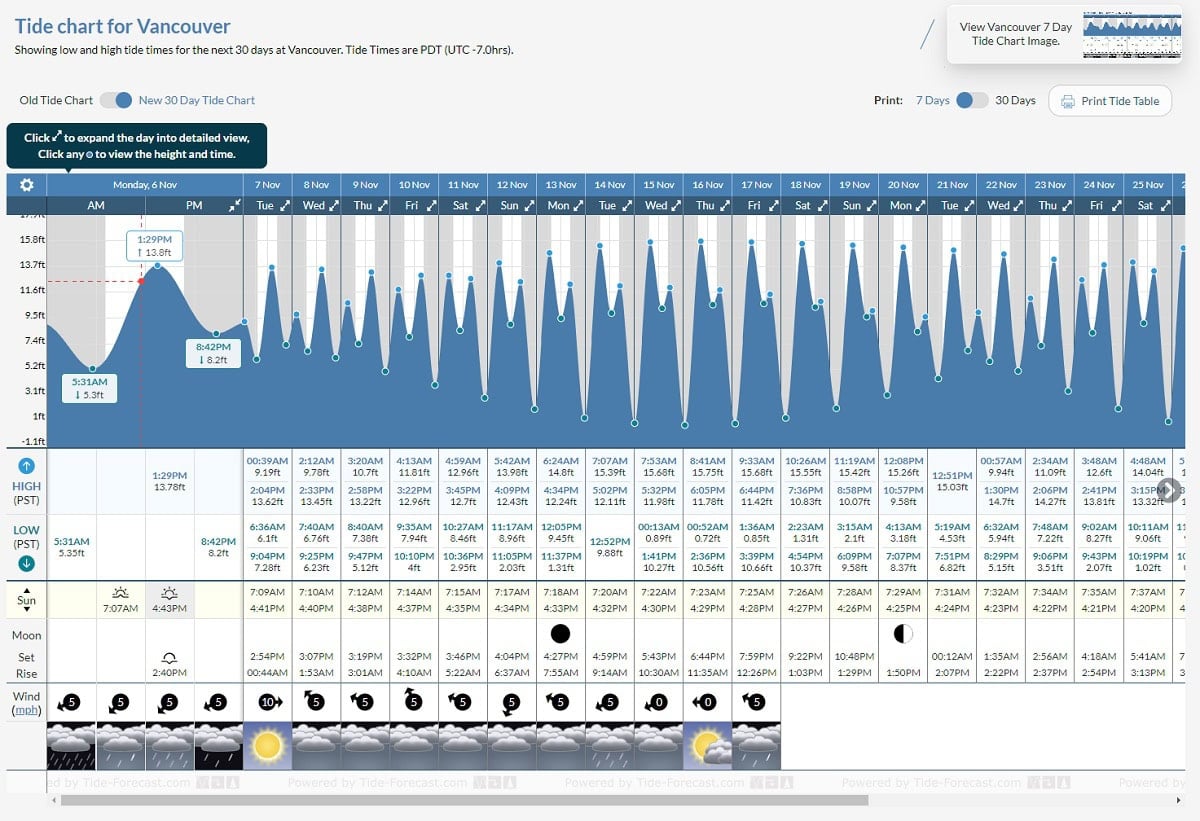
Being outside on the water is an absolute pleasure. There’s not much that can beat the feeling of the sun, wind, and water on your skin.
But those same elements can also be dangerous in the wrong quantities.
It’s important to check your weather forecasts before, and during, your paddle sessions to make sure you don’t get caught in unexpectedly hazardous conditions.
Know Before You Go
Always check your local weather forecasts before you even leave the house. Check the current weather and the forecast during and after your trip. Knowing the overall weather patterns of your area will help you prepare for any changes that might occur.
Long-range forecasts are helpful planning tools but can change rapidly. If you are planning an extended trip (or a future trip) check your forecasts regularly and be prepared to alter plans if needed. In 2023 I had two multi-day SUP trips canceled within 48 hours of departure due to changing weather conditions. It’s a bummer to have to do that, but changing plans is much better than being stuck in hazardous conditions.
Aside from your local weather forecasts, it’s good to get detailed wind, wave, and tide forecasts for your area as well.
What to Watch – Weather
This one is both vague and simple, but shouldn’t be overlooked. Take a look at the general weather for your paddling area. Is it sunny or cloudy? Windy? Is Rain in the forecast? These basic elements can help you prepare by bringing the correct clothing, sunscreen, extra clothing, or maybe postponing the trip a few hours (or days).
Lightning is a Hard Stop / No-Go condition. When Thunder Roars, Head Indoors.

Lightning is not something to be ignored or downplayed, especially when on the water. If you are caught by a sudden storm while on the water, lay down on your SUP and prone paddle (with your hands/arms) back to shore as fast as you can. You want to be as absolutely flat as possible, so do not kneel and paddle, lay all the way down and stay low. Prone paddling is a good skill to practice anyway in case you ever lose or break your paddle while on the water.
Keep and eye out for changing conditions. Light puffy clouds make for a beautiful day, but if they become larger, particularly taller, you may have some serious weather moving in. Shifts in wind direction and speed and changes in pressure can indicate incoming weather fronts as well.
What to Watch – Temperatures
Now we can get into some more specifics. There are two temperatures we should be concerned with as paddlers. The first is Air Temperature. Air temperature will give us an indication of how comfortable we’ll be while paddling, how much water to bring, and possibly what type of garments to wear.
However, you should always “Dress For The Swim.” We’re all between swims, and the Water Temperature, no matter how comfortable the air is, should dictate your level of thermal protection. If the water temperature is under 60°F (15°C) you should be wearing some amount of thermal protection. This could be something as simple as non-cotton layering or as complex as a full dry suit depending on conditions. For more about thermal protection and cold water paddling, check out our in-depth Winter Paddling Guide.

Air temperature should be used to add thermal protection, never subtract thermal protection. It’s far easier to cool yourself down while paddling than it is to warm yourself back up.
What to Watch – Wind
Wind is a double-edged sword. The lack of wind can make the water gorgeously glassy, but can also make you feel swelteringly hot. Significant wind can make for exciting down-wind paddling conditions, or it can pose a significant hazard by preventing you from returning to shore.
For detailed wind forecasts worldwide I use two sources. Windfinder.com and the Windy App (available on both iOS and Android). These interactive forecast tools give you precise information in 1 or 3 hour increments.
When checking your wind forecast, make sure to check both the intensity and the direction.

Onshore winds – winds that blow from the body of water toward land – are great conditions for paddlers as the wind will help you return to land.
Offshore winds – winds that blow from land out toward the water – are potentially dangerous for paddlers as the wind will prevent you from returning to land.
Wind direction can, and will, change from day-to-day and throughout the day. Always keep the direction of the wind in the back of your mind as you start your paddle session and while out on the water. If the wind direction changes, stop and reassess your plans. Wind direction is identified by the direction from which the wind is blowing – its origin, not its destination. Wind directions can be generally described by cardinal compass directions (ex: “northerly wind”, “ESE wind”), or specifically described by the exact azimuth of the wind (ex: “220°”, “95°”).
Wind intensity – how strong the wind is blowing – can be measured in a number of different ways. Wind speed is usually observed in either Miles Per Hour, Kilometers Per Hour, or Knots (1 Knot = 1.125 MPH) depending on where you are and your information source. You can also measure general wind speed in any of those by using the Beaufort Scale.
The Beaufort Scale, or Wind Force Scale, is a visual method of estimating wind speeds. For example, if you are standing on shore and notice some leaves or a piece of paper floating by on the wind, you have Force 4 winds (13-18 MPH / 20-30 KMH / 11-16 Kts). However, if you are standing on shore, but being forced to lean against the wind to stay on your feet, you might have Force 8 winds (39-46 MPH / 63-74 KMH / 34-40 Kts).

It’s important to understand your limitations in paddling in the wind.
For beginners it’s recommended to only paddle in conditions with winds <10 MPH and blowing Onshore. Intermediate paddlers may be able to paddle in tougher conditions with winds 10-18 MPH blowing Onshore.
Advanced paddlers may be comfortably paddling in more intense winds or in offshore winds in certain situations.
I consider myself to be a paddler of advanced skill. If given the option, I prefer not to paddle in winds over 20 MPH – it’s just not that fun unless you have a motorboat to backhaul you for a downwind run. The strongest winds I’ve paddled in have been in the mid 30’s (MPH/ Force 8) and that was downright awful.
One last note about wind. Keep the wind in mind when off the water as well. Carrying your board, setting it up/tearing it down, and putting a SUP on a car roof can all become more difficult and more dangerous when it’s windy. Even a light wind can blow an unsecured board along the ground or off a car roof. I’ve broken my own side-view mirror from one such instance!
What to Watch – Waves
The surf zone is a water-lover’s playground. These areas can be fickle throughout the day, and from day to day, so make sure to check the current and forecast conditions before heading out. Surfline is our go-to for checking current and forecast surf conditions.

What to Watch – Tides
Of all of the factors we’ve discussed so far, Tides are the most predictable. Coastal areas experience two high tides and two low tides per day thanks to the gravitational pull of the sun and moon. Because of this, their timing is predictable.
You’ll have two high tides 12 hours and 25 minutes apart, and two low tides on the alternating 12 hours and 25 minutes. In between those the tide is either rising (from low to high) or ebbing (from high to low).
The height of the tide and timing of the tide does change from tide-to-tide, day-to-day, and location-to-location, so you’ll want to consult your local tide maps/charts to see what’s happening in your area.

These tidal forces can act like underwater winds, pushing you or pulling you toward or away from shore. They can also create areas of intense currents called tidal races that act more like rivers than flat water.
Again, paddlers should be very aware of these tidal forces and the direction they are moving. When the tide is falling, the tidal currents are moving out to sea. Being swept out to sea by an Ebb tide current is just as unforgiving as being swept out by an offshore wind, and may not be as easily recognized.
What to Watch – Rivers
If you paddle on rivers you’ve got one additional piece of weather information to check before you head out. What is happening upstream of your location? Rain storms and dam releases that happen upstream can quickly, and drastically, change the condition of the river you are paddling. Always check for weather systems in the surrounding areas and for any scheduled dam releases.

Final Thoughts on Wind and Weather
I can’t say it enough – always check your weather conditions before leaving home. Nature is beautiful and fun, but can be absolutely unforgiving. In addition to checking the weather, paddling with a partner and monitoring your environment and surroundings while on the water are keys to having a safe time on the water. These weather concerns are not limited to coastal areas, either. While most lakes and rivers won’t have tides to deal with, the wind, water temperature, weather, and changing conditions can be just as serious. Always wear your PFD and appropriate leash, and when in doubt, don’t go out.
